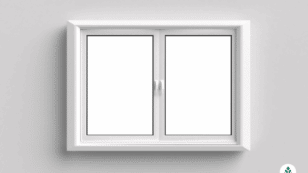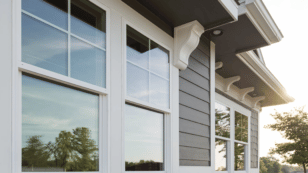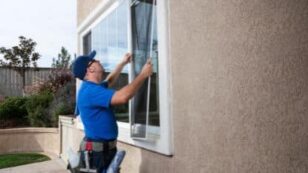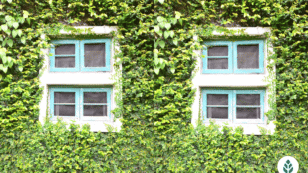
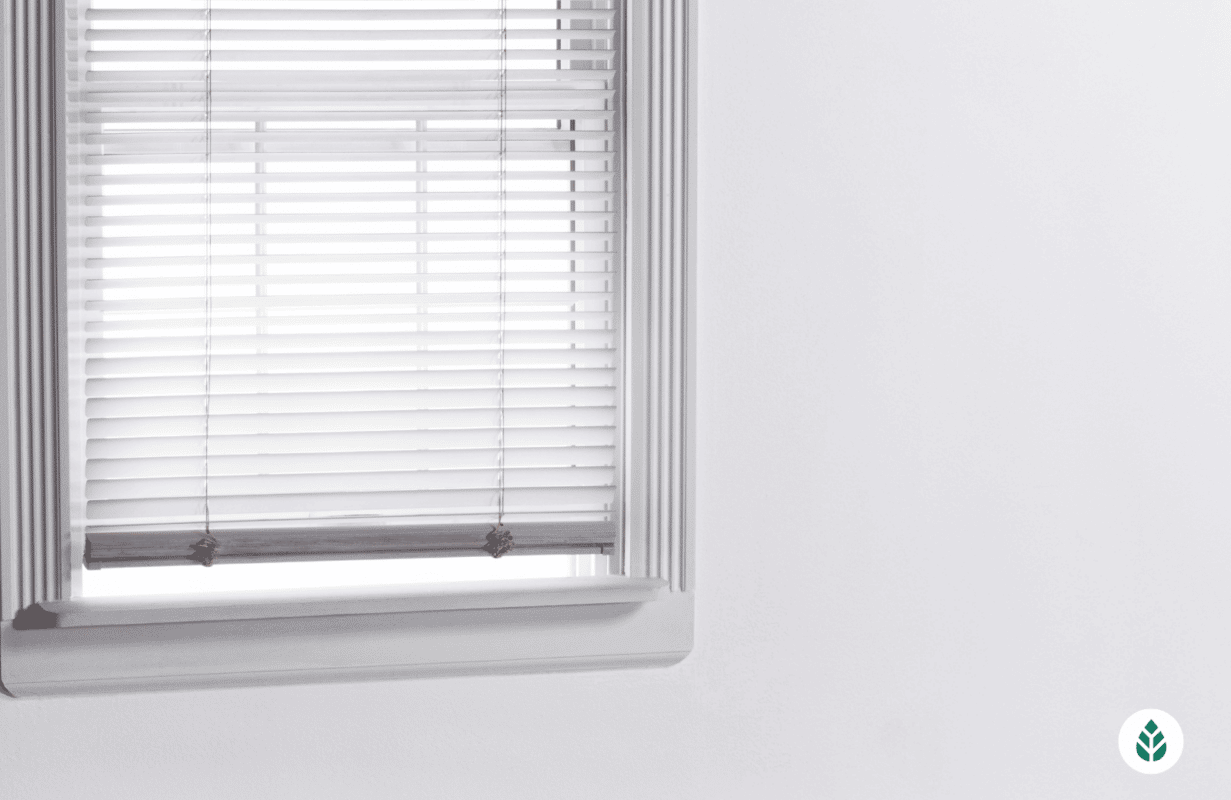
Double-Hung Windows Cost 2024: Replacement & Installation Guide
In this guide on buying double-hung windows, we’ll discuss:
- The national average cost for a double-hung replacement window, which is around $600
- Why you need to consider glass and window frame materials carefully with this style of window
- Why double-hung windows are the easiest style of window to clean
Each product and or company featured here has been independently selected by the writer. You can learn more about our review methodology here. If you make a purchase using the links included, we may earn commission.
Replacing a double-hung window in your home yourself can seem like a good idea, but hiring a professional isn’t terribly expensive and is usually well worth it. The typical cost to replace a double-hung window is around $600, but you can expect to pay anywhere from $400 to $1,000, and sometimes more, depending on a number of factors.
In this article, we’ll discuss the cost factors that determine your double-hung window replacement cost, some pros and cons of this window type, how to save money when replacing your windows and more.
What Are Double-Hung Windows?
Double-hung windows are operable windows that have two movable sashes. The sashes sit on top of one another, and each one slides up and down independently. Most double-hung windows also have releases that let each sash tilt inward to make window cleaning a simple and quick process.
Double-hung windows are the most common window type you’ll find in homes across America. They provide ventilation, are easy to clean, come in frame and glass options that produce excellent energy efficiency, and are relatively affordable. They’re also suitable for any room in the house.
Single-Hung Windows vs. Double-Hung Windows
Many homeowners understandably confuse single-hung windows and double-hung windows. As the name suggests, a single-hung window has just one operable sash — usually a bottom sash — and one stationary sash. A double-hung window has two movable sashes for better ventilation, and both the top sash and the bottom sash tilt for easy cleaning.
Assuming equivalent frame and glass materials, double-hung windows aren’t quite as energy efficient as single-hung windows. The additional moving sash has more moving surface areas around it that can leak air over time.
Casement vs. Double-Hung Windows
Casement and double-hung windows are easier to tell apart because they open differently. Casement windows usually have a crank that pushes the sash outward, similar to how a book opens. The sash is hinged on the side.
A double-hung window has no hinges and instead has two sashes that slide up and down next to each other to provide ventilation. Since casement windows create a seal by compressing weatherstripping rather than having a sliding seal, they are more energy efficient than double-hung windows.

Renewal by Andersen

Save $375 Off Each Window
Average cost
Pros
- Great industry reputation
- Award-winning company
- Member of US Green Building Council
- Manufactures products in-house
Cons
- No lifetime warranty
- More expensive than competition

Window World
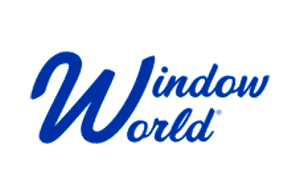
200 Locations Nationwide
Average cost
Pros
- EnergyStar Partner
- Large service area
- Wide variety of products and services
- Great industry reputation
- Lifetime warranty
Cons
- Quality of service will depend on your area

Window Nation

9 States (75 miles from showrooms)
Average cost
Pros
- Award-winning company
- Wide variety of products and services
- Manufactures products in-house
- Custom Designs
Cons
- Installation not covered by warranty
- Limited service area
Benefits of Double Hung Windows
Double-hung windows might not be the most energy-efficient option, but they’re the most popular style for several reasons. Below are some of the most significant upsides to installing double-hung windows.
- Great ventilation: Since double-hung windows have two sashes that can open, this style provides excellent ventilation. You can open one or both sashes to let fresh air in and encourage a cross-breeze.
- Easy to clean: Most double-hung windows have pins and releases that allow each sash to tilt inward. This makes it easy to clean both sides of the glass and the sashes without having to go outside
- Readily available: Since double-hung windows are the most common and popular style of window, they’re readily available from most retailers and window manufacturers. You should have no issues finding this window type, and, in many cases, you won’t have to wait long for delivery.
- Color and size options: The popularity of double-hung windows means that many manufacturers offer this type of window in a variety of colors and sizes. This provides some opportunity for customization and boosting your home’s curb appeal.
- Affordable: Another benefit to the popularity of double-hung windows is that they are mass-produced, which helps keep the price low. Double-hung windows are relatively affordable.
Drawbacks of Double-Hung Windows
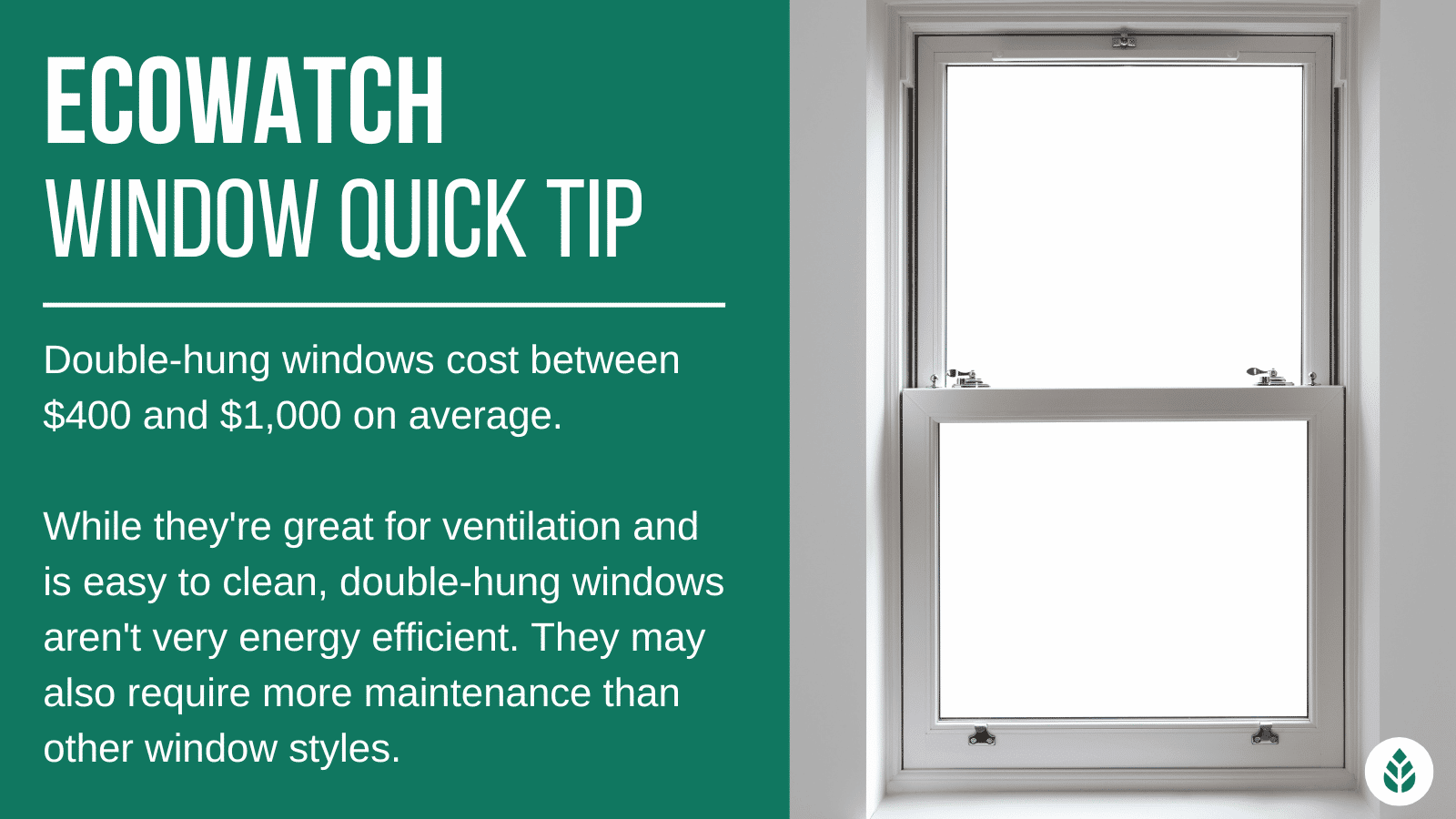
- Relatively low efficiency: Unfortunately, double-hung windows are not the most energy-efficient window option. The sides of both sashes can’t be perfectly sealed with weatherstripping because they need to slide against the side jamb. This means they leak more air and transfer more heat than most other window types, sometimes leading to increased energy costs and higher energy bills. We would not recommend this window for sustainability but there are plenty of other window options that are more energy efficient.
- More maintenance: Double-hung windows have a lot of moving parts, including balances, pivot shoes, tilt latches and more. With double the working parts of a single-hung window, double-hung windows often require more maintenance and repairs than other styles. Additionally, smooth operation requires regular servicing to prevent friction between the sashes and the side jambs.
- Some obstruction of natural sunlight: Finally, double-hung windows have rails — and often muntins and grilles — that impede some natural light from coming into your living space. The obstruction is about on par with a single-hung option, but this style blocks more light than picture windows, casement windows and awning windows.
How Much Are Double Hung Windows Really?
A typical double-hung window replacement will cost around $600. However, things like frame type, glass type, location in your home and more can influence the total. Most homeowners pay between $400 and $1,000 for their double-hung windows, but you might find your total well above $1,000.
Double Hung Window Cost Factors
It’s challenging to give a single, accurate cost for a double-hung window replacement because many factors can bring the material costs either below or above average. We’ll discuss the primary cost factors below.
- Window style: A single double-hung window is what the $600 estimate refers to. If you have a twin double-hung window (two windows that share a center mullion) or a triple double-hung window (three windows that share two center mullions), then your cost will be significantly higher.
- Window size: Windows are priced, at least in part, based on size. The more square feet included in your wall opening, the more your window will cost. Double-hung windows don’t vary as much in size as casement or picture windows, so this will be a less critical factor for this type of window. Feel free to measure your space and determine if this is a good window type.
- Frame material: Double-hung windows can be constructed with a variety of frame options, including aluminum, vinyl, composite material, fiberglass and wood. The material you choose will have a significant impact on the window’s efficiency and cost, as well as on your energy savings.
- Window construction: The quality of the window’s construction will determine its durability and how low-maintenance it is overall — important with double-hung windows in particular. It will also affect the price, as higher-quality windows naturally cost more.
- Window brand or series: There are many window manufacturers to choose from, and the one you pick will largely dictate your window quality and overall price. Choosing a double-hung window from a window company like Pella or Marvin will always be more expensive than going with a budget option like Jeld-Wen.
- Customization options:. Double-hung windows come with visible hardware, muntins and grilles that can be customized to your personal preference. The cost for your windows ranges based on what you choose. You can also choose from a variety of internal options, like different types of balances, which can affect the window’s operation and cost.
- Permit cost: Finally, your city or town might require a building permit for window replacement. If that’s the case, you might need to figure in an additional $50 to $200 to the total cost for installation.
Glass choice and treatments will also come into play. Three kinds of glass are readily available for double-hung windows: single-pane, double-pane and triple-pane. Double-pane and triple-pane glass have layers of argon gas or krypton gas between the panes of glass for insulation.
As you add panes you get better energy efficiency and noise insulation, but your price also increases quite dramatically. Double-pane window glass is the best option for balancing efficiency and cost.
You can also pay more to have glass coatings added, including low-E (low-emissivity) coating and window tinting. The prices for these add-ons don’t change between double-pane and triple-pane window glass.
Installation Pricing Factors
A portion of your installation price will be for labor alone. Unless you’re replacing your window yourself as a DIY home improvement project, the factors below will have an impact on your total as well.
- Widow size and shape: The size of your window affects your material costs, but it can also make your window more challenging to install, pushing the labor costs higher as well. Larger windows or bulky windows can both require multiple window installers to be on site for a portion of the installation, which can double or triple your labor charges.
- New vs. replacement: If you’re installing a window on a new construction home, your labor charges will be reduced because there is no old window to remove. You’ll save an average of around $100 on labor if you install a window on a new home rather than pay for a window replacement.
- Lift requirement: If you’re replacing a double-hung window on the second floor of your home, it might not be possible for your window technician to carry the window up to install it. If a window lift is required — especially for larger double-hung windows — you’ll pay more for labor not only for the equipment rental but also for the additional technician required to operate the machinery.
- Stucco repair: If your home has stucco siding, it can easily get cracked or chipped during the window installation, especially if a lift is used to pull the window up into place. You may need to add on $100 or so for stucco repair if damage does occur.
- Seasonality: Like most other industries, window replacement has a seasonality to it. Most homeowners prefer to get windows replaced when the weather is warmer, so spring and summer are the busiest. During these months, you can expect prices to be a bit higher due to the increased demand.
- Geographic location: Finally, where you live can have an impact on your window replacement cost. As with all other building materials, the pricing of double-hung windows can vary based on location. Costs will tend to be higher in areas where the cost of living is higher.
Average Costs of Double-Hung Windows by Window Style
There are just a few styles of double-hung windows that you can purchase: single, twin and triplet. Beyond those, a custom order would usually be needed. We’ll include average costs for these options in the table below.
Style of Double-Hung Window |
Average Installation Price (Per Window) |
| Single Double-Hung Window | $600 |
| Twin Double-Hung Window | $1,500 |
| Triplet Double-Hung Window | $2,400 |
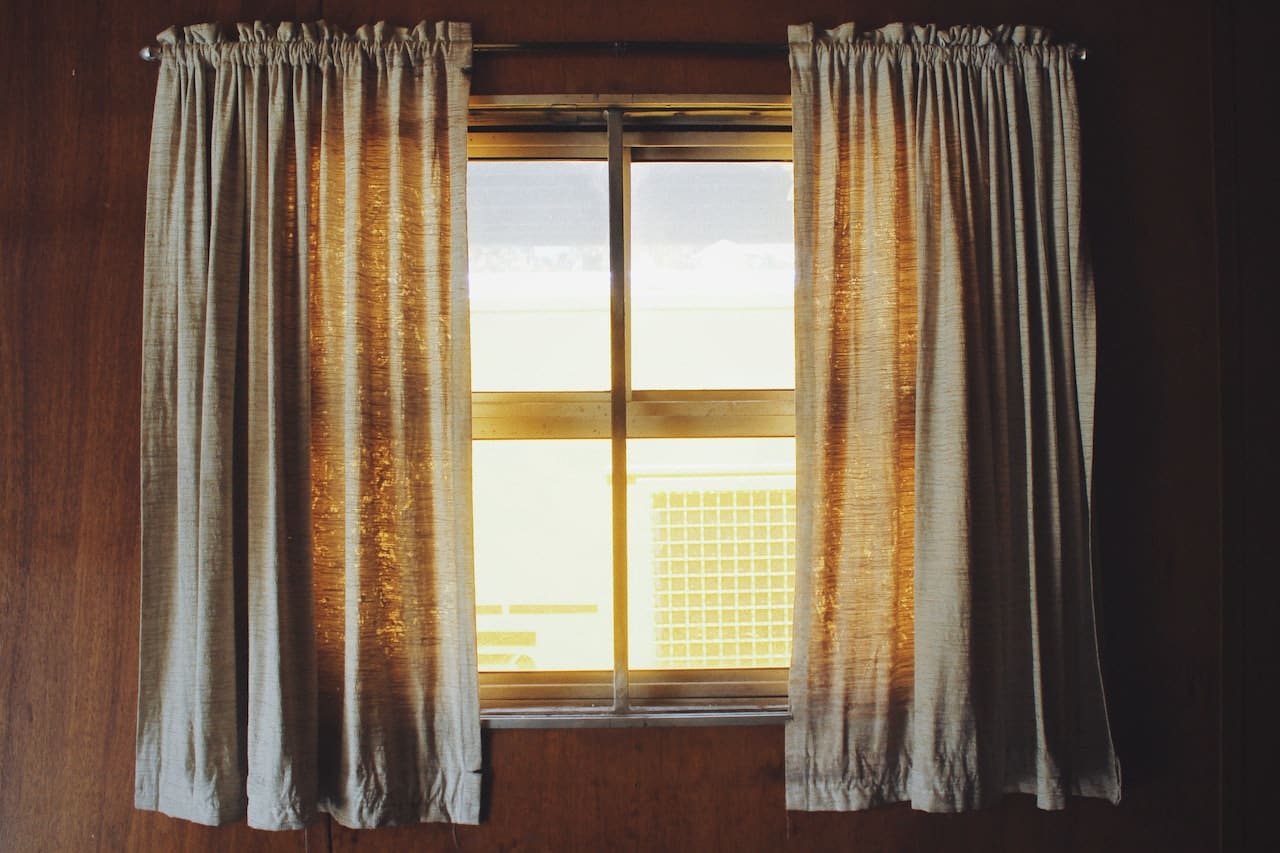
Double-Hung Window Prices by Size
Double-hung windows come in a variety of standard sizes, but they vary less in the available dimensions than many other options. In the table below, we’ll include some average pricing for a few different sizes you’re likely to see and need for your home.
Double-Hung Window Dimensions (With Interior Sash Size) |
Average Installation Price (Per Window) |
| 36″ x 24″ (3020) | $400 |
| 36″ x 28″ (3024) | $450 |
| 44″ x 24″ (3820) | $500 |
| 44″ x 28″ (3824) | $550 |
| 44″ x 32″ (3828) | $600 |
| 54″ x 28″ (4624) | $700 |
| 54″ x 32″ (4628) | $750 |
| 54″ x 40″ (4634) | $800 |
| 72″ x 32″ (6028) | $900 |
| 72″ x 40″ (6034) | $950 |
| 72″ x 48″ (6040) | $1,000 |
How to Purchase Double Hung Windows
You have two primary options for buying double-hung windows: you can buy them from a manufacturer, like Marvin or Milgard, or you can buy them from a retailer, like Home Depot, Lowe’s or Costco. Buying from a manufacturer usually yields a better quality window for the price, although you might have to wait for construction and delivery, which can take weeks.
Buying from a retailer gives you more options as far as brand goes, and you can generally just go to the store and bring the windows home with you immediately. Your cost per window will also tend to be lower. However, the quality of the windows from retailers tends not to be as high, and you might not get the same warranty coverage.
Best Brands and Pricing for Double Hung Windows
Double-hung windows are the most common type of window, so you should have no shortage of brands to choose from. Nearly every window manufacturer makes this style, and prices can vary based on quality and warranty coverage. In the table below, we’ll include some typical pricing you can expect to see from different window manufacturers.
Window Brand |
Average Installed Cost (Per Window) |
| American Craftsman | $400 |
| Andersen | $700 |
| Certainteed | $900 |
| Harvey | $900 |
| Hy-Lite | $550 |
| Jeld-Wen | $500 |
| Marvin | $750 |
| Milgard | $800 |
| Pella | $750 |
| Reliabilt | $500 |
| Simonton | $750 |
How to Get the Best Prices on Double-Hung Windows
Double-hung windows can get quite expensive, especially when you buy from a high-end manufacturer and choose more insulative frame and glass materials. Most property owners will, understandably, want to save as much money as possible when purchasing and installing new windows. There are a few things you can do to keep costs down.
First, you can optimize your frame and glass materials for efficiency and your budget. Choosing options like fiberglass frames and tri-pane glass will yield the best window efficiency, but opting for more affordable options won’t decrease efficiency too much and will reduce your window price significantly. Below are the most budget-friendly options:
- Double-pane window glass: Double-pane glass offers a nice blend of affordability and efficiency. It’s the most common option for this reason, and it’s suitable for most climates.
- Vinyl window frame: Vinyl windows are far more affordable than fiberglass and composite windows, and they’re more insulative than aluminum and wood windows and have higher Energy Star ratings. Vinyl is the most popular option for its balance of efficiency and low price.
- Skip glass coatings: Low-E glass coatings and tinting will make your home more energy-efficient, but you can avoid these and use your window treatments to provide a similar boost to efficiency to save some money.
You can also time your window purchase with the season and holidays. Replacing windows in warmer weather is tempting, but remember that prices will be a bit higher in the spring and summer due to increased demand. You can also look for deals on holidays, which will more often be provided by manufacturers over retailers.
Finally, replacing all of the windows in your home will yield savings on each window. You’ll spend more overall based on the number of windows being replaced, but most window contractors will discount per-window installation costs if they can save travel time and offer bulk pricing for materials.
Calculating Double-Hung Windows Budget
All the project cost factors above can get overwhelming when calculating what your budget needs to be. The formulas below will help you calculate your expected pricing a bit more accurately.
To calculate the cost of replacing one double-hung window:
(Frame Cost + Glass Cost + Labor Costs + Glass Coatings + Window Accessories) x Brand Coefficient = Cost for One Double-Hung Window Replacement
To calculate the cost of replacing all the windows on your home at once:
Double-Hung Window Replacement Cost (from above) x 0.95 (discount factor) x Number of Windows In your Home
Examples:
If you choose an installer like Andersen — which sits a bit above average in terms of cost — and add on a low-E coating, your prices might look something like this:
($300 + $150 + $150 + $75 + $0) = $675 x 1.1 = $742.50 for a single Andersen double-hung window
($300 + $150 + $150 + $75 + $0) = $675 x 1.1 = $742.50 x 0.95 x 10 = $7,053.75 for 10 windows
FAQ: Double Hung Windows
Double-hung windows are a relatively affordable option. Since they’re smaller than many other window options — like bay windows, bow windows and many fixed windows — the price per window will be comparatively low. However, they will be more costly than simpler options like single-hung windows.
With that being said, double-hung windows are more complex and have more moving parts, so their price sits around average for window replacement in general.
Additionally, it’s important to recognize that the price you pay for a double-hung window depends largely on the options you choose.
A twin or triplet double-hung window will cost far more than an average picture window, for example, and choosing fiberglass window frames or tri-pane glass will drive your window cost up quite a lot over double-pane window glass and vinyl frames.
The installation process for double-hung windows is similar to that of most other windows. The average installation time is between one and two hours. This timeline can be extended if the window is being installed on a second floor, as lifting the window and maneuvering it into place can be more challenging and time-consuming.
It’s also worth mentioning that a new-construction window installation will take about half the time since there is no existing window to remove. Putting in a double-hung window in an empty wall opening can typically be done by a professional in 30 to 45 minutes.
Lastly, it’s important to note that, although double-hung windows are common and usually in stock, purchasing custom windows or high-end windows might include a wait time of several weeks for construction and delivery.
Yes, double-hung windows are operable. This style of window has two movable sashes, each of which can be slid up and down to provide ventilation.
Additionally, most double-hung windows have sashes that can tilt out of the window opening to allow for easy cleaning. The multiple moving parts in these windows mean more maintenance is required, but this style has the most operability of any window option.

 233k
233k  41k
41k  Subscribe
Subscribe 


